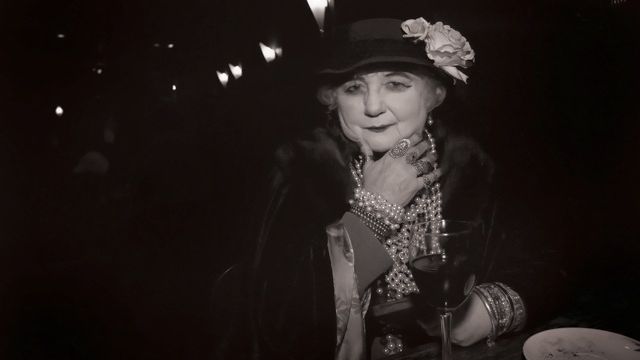Bijou
In a story set in cabaret and punctuated with song and dance, Chrissie Shaw performs as Bijou, after writing the show on the basis of personally researching the background of a photo of Madame Bijou and patching together a story based on the facts she was able to dig up. The story unfolds from the present backwards, eventually revealing how a fairly hardened performer and brothel madame emerged from an innocent religious girlhood.
Shaw’s was a demanding performance: her sometimes long soliloquies were punctuated or accompanied by singing and dancing, and her interactions with the cabaret audience required adaptability. For all that, she retained great control of both speech and singing, and conveyed the forceful personality of a survivor of hard times. The performance was nicely complemented on piano, vocals, and poetry by Alan Hicks. The costuming, set design, and lighting all worked well to surround the audience with the feel of a genuine old-world environment. And the story is interestingly structured.
The work offers no strong messages, no fabulous inspirations, and little comedy; but it’s a convincing portrayal of a life bounded by religion, war, changing mores, and universal needs, and as such offers insights into the struggles, choices, and triumphs of artists and other mortals bewildered and isolated by unquestionable authority, abuse, war, conscription, invasion, and poverty.
John P. Harvey
Image: Chrissie Shaw, as Bijou. Photographer: Lyndel Arnett.
Subscribe to our E-Newsletter, buy our latest print edition or find a Performing Arts book at Book Nook.

